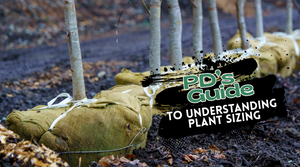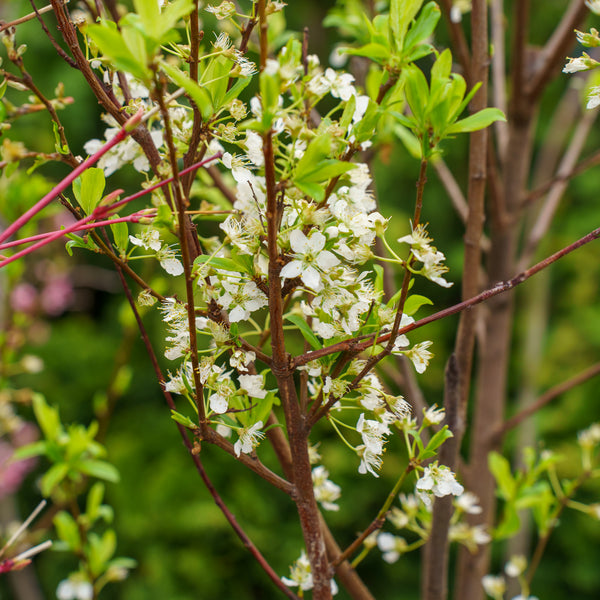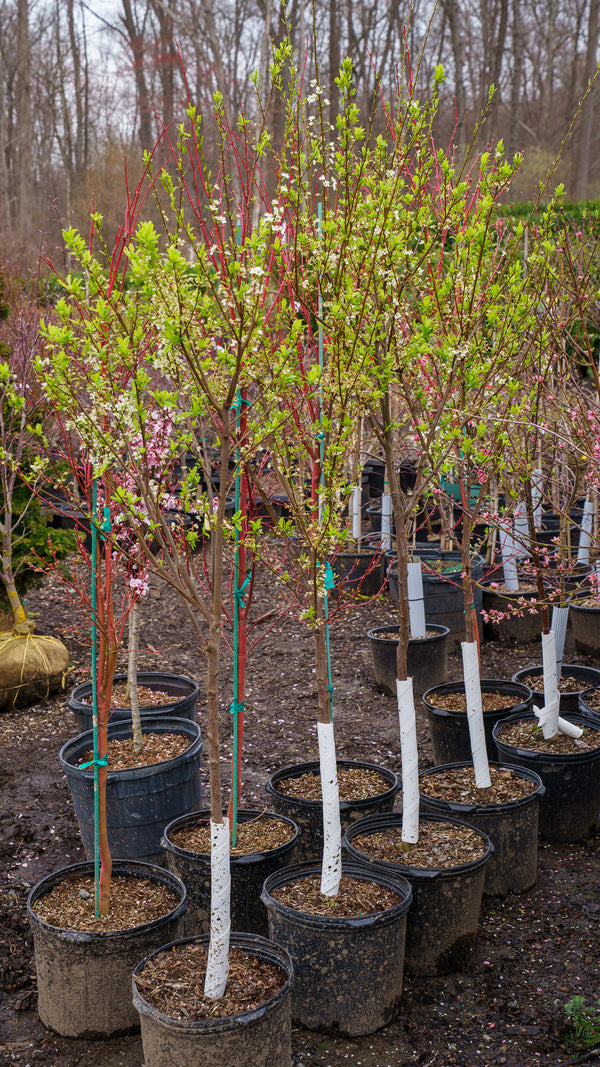Santa Rosa Plum
Santa Rosa Plum (Prunus salicina 'Santa Rosa')
Santa Rosa Plum is a celebrated Japanese plum valued for richly flavored, aromatic fruit with reddish purple skin and amber to red flesh; vigorous trees with a rounded canopy provide reliable mid to late summer harvests for fresh eating and desserts.
Distinctive Features
Signature Flavor: Juicy, sweet-tart plums with complex fragrance and excellent eating quality; Showy Bloom: White spring flowers lead to heavy crops in full sun when thinned properly.
Growing Conditions
- Sun Exposure: Full sun for strongest bloom, sugar, and color.
- Soil: Deep, well-drained loam enriched with organic matter; avoid waterlogged sites.
- Water: Keep evenly moist from bloom through fruit swell; reduce slightly after harvest.
- USDA Hardiness Zones: 5 to 9.
- Mature Size: About 12 to 15 ft tall and wide on semi-dwarf; 8 to 12 ft on dwarf rootstocks.
- Bloom Time: Spring; fruit ripens mid to late summer depending on climate.
- Soil pH: Slightly acidic to neutral, about 6.0 to 7.0.
Ideal Uses
- Focal Point: Spring blossom and colorful fruit create a seasonal centerpiece.
- Home Orchard: High-quality fresh fruit with versatility for baking and preserves.
- Edible Landscape: Attractive foliage and fruit pair with herb and pollinator borders.
- Small Yard Tree: Manageable size on dwarf or pruned semi-dwarf frames patios and lawns.
Low Maintenance Care
- Watering: Deeply soak when the top 1 to 2 in are dry; increase frequency during heat and fruit swell.
- Pruning: Train to open center; winter prune to renew fruiting wood and summer thin watersprouts to improve light and airflow.
- Fertilizing: Feed in early spring with a balanced fruit tree fertilizer based on soil test; avoid excess nitrogen that softens fruit.
- Mulching: Apply 2 to 3 in organic mulch, keeping it a few inches from the trunk to conserve moisture and suppress weeds.
- Notes: Self-fruitful in many areas but heavier crops with a compatible Japanese plum such as 'Beauty' or 'Burgundy'; thin fruit to 4 to 6 in spacing and monitor for brown rot, plum curculio, and aphids.
Why Choose Santa Rosa Plum?
- Outstanding Flavor: Classic sweet-tart taste with fragrant, juicy flesh.
- Reliable Producer: Consistent crops with proper thinning and sun.
- Home Garden Fit: Adaptable tree size and straightforward training.
- Kitchen Versatility: Excellent fresh, grilled, baked, or preserved.
Plant in full sun with deep, well-drained soil, provide steady moisture during fruit set, and thin and prune regularly for premium, richly flavored plums.

OUR SIZING
Not sure what 2 inch B&B or 30 Gallon Clump really means? This guide breaks down all our plant size terms so you know exactly what to expect, whether you're ordering online or picking up at our nursery. From caliper measurements to container volumes, we've decoded our system to help you shop with confidence.

Plant Detectives Shipping Guide
Nationwide plant shipping made easy. Learn how we ship trees, shrubs, annuals and perennials. No order too big or too small. Fast, careful, and contractor-friendly.


